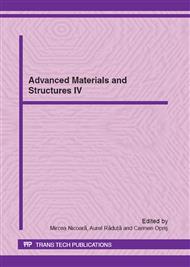p.52
p.59
p.65
p.70
p.76
p.82
p.87
p.93
p.98
Comparative Study of the Biomechanics of Materials Used in Stenting
Abstract:
This paper presents a comparative bibliographic study of different materials with elevated biomechanical biocompatibility regarding the stent-blood vessel interaction. Only the materials used in coronary stents’ manufacturing are considered: stainless-steel (316L), Cobalt-Chromium alloys (CoCrMo, CoNiCrMo), Nickel-Titanium alloys (Nitinol), Tantalum. The main characteristics that result from the stress-strain curve of each material are presented, as well as the biocompatibility and durability. The stainless-steel has good mechanical properties, excellent biocompatibility and low price. Cobalt-Chromium alloys have excellent mechanical properties, excellent biocompatibility, acceptable shape memory properties, but high density and low flexibility. The Nitinol represents the best choice, with excellent mechanical properties, excellent biocompatibility, good corrosion resistance, high flexibility (super-elastic behavior), low density, but high price. Tantalum alloys present the best biocompatibility and high flexibility, but the mechanical properties are relative modest.
Info:
Periodical:
Pages:
76-81
Citation:
Online since:
May 2012
Authors:
Keywords:
Price:
Сopyright:
© 2012 Trans Tech Publications Ltd. All Rights Reserved
Share:
Citation:


